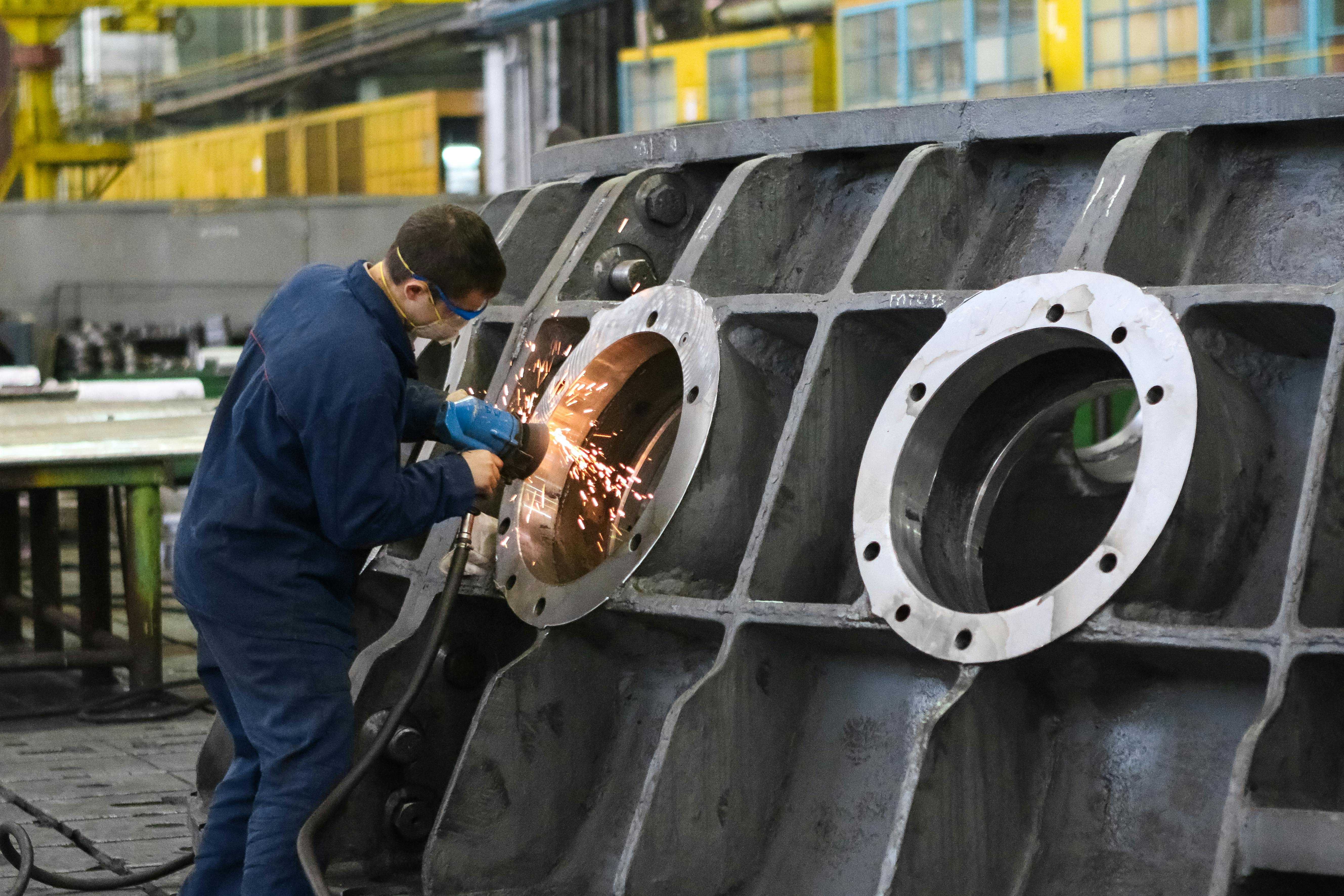Automated Quality Inspection (AQI)
Transforming Quality Management: The Rise of Quality Control Inspection Automation
Automated Quality Inspection (AQI) has revolutionized how businesses ensure the excellence of their products, pushing the boundaries of precision, speed, and reliability. Let's explore the realm of AQI, the challenges it addresses, and the undeniable value it brings to modern supply chains.
What is Automated Quality Inspection (AQI)?
Automated Quality Inspection refers to using advanced technologies, including AI, machine learning, and robotic systems, to conduct detailed and accurate inspections of products without significant human intervention. This process ensures that every item meets established quality standards while identifying defects, inconsistencies, or deviations from the desired specifications.
Who Needs Quality Control?
Robust quality control systems can benefit virtually every manufacturing sector, particularly those in electronics, automotive, pharmaceuticals, and food and beverage. These industries demand high precision and strict safety and quality regulations.
The Challenges in Automated Quality Control Inspection
While AQI promises transformative outcomes, its implementation is not without hurdles:
High Initial Investment. The upfront cost of integrating sophisticated AQI systems can be substantial.
Technical Complexity. Designing and maintaining AQI systems requires specialized knowledge and skills.
Adaptability Concerns. Adapting AQI to handle diverse products or rapidly changing specifications poses significant challenges.
Operational Integration. Organizations that already struggle to react efficiently and effectively to Quality Control Inspection issues will be even more challenged by automated inspections.
Case Studies: The Competitive Edge of Automated Quality Control
In the fiercely competitive manufacturing landscape, adopting Automated Quality Inspection (AQI) has emerged as a pivotal factor in securing a market advantage. Let’s compare two hypothetical scenarios within the semiconductor industry, highlighting the transformative impact of AQI on operational efficiency, product quality, and market positioning.
Case Study 1: The Manual QC Giant Struggles
Company Profile
Imagine a leading semiconductor manufacturer, a key supplier for major tech companies like Apple. Traditionally, their quality control (QC) processes have relied heavily on manual inspections, spreadsheets for tracking defects, and email for communication among QC teams.
Challenges Faced
Inconsistent Quality. The human element in manual inspections results in inconsistencies in defect detection, which affects overall product quality and increases the rate of returns.
Compounded Delays. Manual entry and analysis of QC data slow down the inspection process, causing bottlenecks in production and delivery delays.
Miscommunication. Reliance on emails and spreadsheets frequently leads to prolonged or inaccurate communications among team members, which in turn builds delays and errors in the QC process.
Market Impact
Notwithstanding their industry leadership, the company begins to notice some competitive deterioration. High defect rates and delayed shipments are tarnishing their reputation. The increased rate of returns and corrections costs are hurting their bottom line and brand.
Case Study 2: The Agile Competitor Wins with AQI
Company Profile
This smaller, ambitious semiconductor manufacturer aims to expand its market share. Recognizing the limitations of manual QC processes, and seeing an opportunity to differentiate themselves through precision, speed and data analytics, they invested early in an integrated AQI system.
Strategies for Success
Tight AQI Process. Leveraging cutting-edge AQI technology allows for real-time defect detection and analysis, significantly reducing the number of defective products leaving the factory.
Efficiency Gains. Automation in quality control speeds up the inspection process and reduces the need for a large QC team, enabling the company to operate more leanly and cost-effectively.
Data-Driven Decisions. The AQI system provides detailed insights into quality trends, enabling proactive adjustments in the manufacturing process to enhance product quality further.
Market Impact
The smaller manufacturer quickly gains a reputation for high-quality products with remarkably low defect rates. This reputation, combined with their ability to maintain competitive pricing due to lower overhead costs, positions them as a formidable competitor in the market. Thanks to their superior product reliability and faster turnaround times, they begin to secure contracts from tech giants, previously the domain of larger manufacturers.
Automation as a Market Differentiator
These case studies illustrate the strategic value of Automated Quality Inspection in manufacturing. While the larger company struggled with the inefficiencies and errors inherent in manual QC processes, the smaller competitor capitalized on the precision, efficiency, and data insights afforded by AQI. The result? A shift in market dynamics, where agility, product quality, and operational efficiency arebecome the key drivers of success.
In today’s competitive landscape, AQI benefits go beyond enhancing quality control. AQI helps firms redefine their market position and secure a sustainable competitive advantage. For manufacturers, investing in AQI is a strategic move towards future-proofing their operations and securing a leadership position in the market.
The Impact on Your Supply Chain of Inadequate Quality Control
Increased Returns and Recalls
A direct consequence of poor quality control is an uptick in product returns and recalls. Not only does this result in immediate financial losses due to refunding customers or replacing products, but it also incurs additional logistics and handling costs. For example, a consumer electronics company might see a spike in returns due to a batch of products with battery issues, which were not caught during the initial inspection phase.
Erosion of Customer Trust and Brand Reputation
The impact of poorly managed quality control extends beyond the immediate financial hit. Repeated quality failures erode consumer trust, potentially leading to lasting damage to the brand's reputation. In the age of social media, negative customer experiences can be amplified, deterring potential customers and affecting long-term sales. Consider a furniture retailer that consistently delivers damaged goods; over time, this can lead to negative reviews and a decline in customer loyalty.
Disruptions in the Supply Chain Efficiency
Quality issues can cause significant disruptions in the supply chain, leading to bottlenecks and inefficiencies. Defective components or raw materials can halt production lines, delay shipments, and create inventory management headaches. These issues affect not only the company facing them but can also have upstream and downstream effects on suppliers, distributors, and retailers within the supply chain. For instance, an automotive manufacturer might face production delays upon receiving substandard parts from a supplier, affecting their ability to meet dealer inventory demands.
Legal and Regulatory Ramifications
Companies that fail to meet quality standards may also face legal and regulatory consequences. This is particularly true in industries where products directly impact consumer health and safety, such as pharmaceuticals and food production. Non-compliance with quality regulations can result in hefty fines, legal action, and, in severe cases, business closure.
The Opportunity Cost of Missed Market Opportunities
Poor quality control management can lead to missed market opportunities. Businesses preoccupied with mounting quality issues and their fallout might lack the resources or the bandwidth to capitalize on new market trends or innovations. The time and money spent rectifying quality problems could have been invested in research and development, expanding product lines, or exploring new markets.
The Business Case for Automation
Investing in AQI systems offers tangible benefits:
- Enhanced Precision and Reliability. Automation minimizes human error, ensuring consistent quality.
- Operational Efficiency. AQI can inspect products much faster than manual methods, keeping pace with production demands.
- Data-Driven Insights. Automated systems provide detailed data on quality trends, enabling proactive improvements in manufacturing processes.
The transition to Automated Quality Inspection is not just the latest technology fad; it's a strategic move toward building a more efficient, reliable, and competitive business. The challenges of integrating AQI are outweighed by its potential to enhance product quality, streamline operations, and fortify your position in the market. As businesses continue to navigate the complexities of modern manufacturing and supply chains, the role of AQI as a critical contributor to quality control will only grow in significance.
Rivet Completes Quality Control Inspection Automation
Rivet, Traverse Systems’ business process automation solution, combines software and professional services to integrate AQI into your business processes. It lets you integrate AQI data with your existing documents, data, and, where desired, data repositories and applications. Rivet allows companies of all sizes to effectively and efficiently act upon AQI output.
Rivet automatically alerts appropriate personnel of issues surfaced by AQI. It also generates alerts associated with erroneous, incomplete, or late responses to AQI updates. And its customizable dashboards give you visibility into the status of processes, risk exposure, and the need for action.
The result is a stronger and more profitable bottom line. Rivet helps you to easily:
- Surface AQI issues in near real-time, and simultaneously alert all affected personnel inside and outside your organization.
- Create a workflow that tracks issue responses through their lifecycle.
- Aggregate and make available all documentation and paperwork related to AQI output follow-up.
- Alert all appropriate participants, including suppliers, distributors, retailers, and customers, of quality control status and, where appropriate, next or overdue steps
- Establish and defend accountability, trends, and appropriate resolutions or process changes



